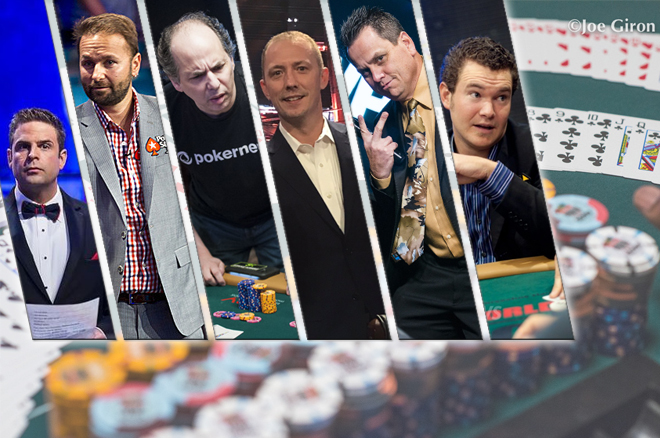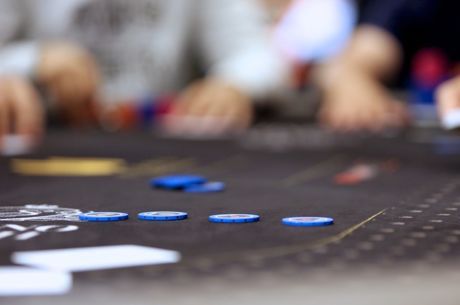How Does Big Blind Ante Work
The big blind is unique and different from any other position at the table. There are certain things we would do in the big-blind that we would almost never do in any other position.
BB ante is the way to go. Live tourneys are slowed considerably by each player having to ante every hand. The dealer's job is easier and thing go faster with BB ante. There is no difference in cost.
- The Big Blind Ante or Button Ante is a live poker system where the Big Blind or Button also posts all the Antes for the table. For simplicities sake it is usually just the same amount as the Big Blind. So if the blinds previously would be 200/400 with a 25 Ante, the new version would be 200/400 and the Big Blind or Button posts another 400.
- There will be one single ante posted for the whole table by the player in the Big Blind. The ante is posted first and players from any position will be eligible to win the entire ante regardless of chip stack. Antes never reduce until end of tournament.
- But with the big-blind ante, Balaisis would have that same 6,000 every hand until he reached the big blind. When the big blind came around to him, Balaisis was forced all in for the 6,000 ante (link to the hand), which became the main pot. What this meant is that even if everyone else at the table played the hand, Balaisis was only eligible to.
- Big Butt Young woman Like To Fuck Extremely huge shaft clip-11; Sharkspeare, Her Story Of Two Boys 7 free sex comic; Watch hot fuck #102 (busty ebony cougar) Kinky teen solo amative for temptinglip service hd sex tube. Milk enema porn captivating ebony lesbian milk enema porn for sensual ebony lesbian milk big tit lesbian enema.
Loosen Up!
BB Ranges
BB vs BTN 2.5x
- Light Red – Value 3bet
- Dark Red – Bluff 3bet
- Dark Blue – Cold-Call

BB vs CO 3x
BB vs MP 3x
Who Pays The Big Blind Ante
Big Blind Ante Format
BB vs UTG 3x
BB vs SB 2.5x
The Unique BB Spot
Overcalling/Squeezing

- Light Red – Value Squeeze
- Green – Squeeze OR Overcall
- Dark Blue – Overcall
- Red – Bluff Squeeze assuming both players aren’t calling stations
What Is Big Blind Ante
Iso-Raising or Checking
Putting it Together
If there is one thing we should take away from this article it’s that we shouldn’t be scared to defend our BB aggressively. The offshoot of this is that we are going to be finding ourselves postflop with weaker hands than we are used to. In order to deal with this we should also invest time in learning how to play postflop when OOP.More Top Recommended Content By Adam Jones
If you enjoyed reading this article, check out other top recommended articles by Adam Jones- UTG Poker Strategy and Guidelines for EP Play
- Bluff-Catching The River
- The Advanced 3-Betting Strategy - Part 1
- Defending Blinds Post-Flop - Part 1
In recent years more and more poker rooms have offered tournaments featuring a new format that fundamentally changes how antes are approached. Known as “big blind ante,” this new approach sees a major change: instead of every player anteing each hand, one player antes an amount equal to the big blind each round. The ante is dead and is immediately brought into the pot, while big blind is live and is part of the pre-flop betting. The goal is to save time and confusion, with dealers no longer responsible for going around and grabbing an ante from each player in turn and settling disputes when it is unclear if a player has anted or not.
Earlier this year the World Series of Poker announced that the big blind ante format would be utilized for the first time in bracelet events at the 2018 WSOP, with a total of 8 of the 78 bracelets awarded coming in events using the new method, including the $1 million buy-in Big One For One Drop and a number of other no-limit events with buy-ins across the price-point spectrum. A number of other events at the Rio this summer will also utilize the format, including two Daily Deepstacks events.
The first event on the schedule to feature the ante change is the $100,000 no-limit hold’em high roller, which kicked off at 3:00 p.m. on Friday, June 1. Card Player TV caught up with two-time WPT champion Jonathan Little on day 1 to discuss the format.
“The idea behind the big blind ante is that it speeds up the game… and that is usually good because the game goes much faster,” Little said in the video. “I think it is a great idea because you can play more hands. It effectively makes the structure better, for free.”
Little also shared some advice for players who might be trying out the format for the first time at this year’s WSOP.
“When there is a big blind ante the game is essentially the same,” Little suggests. “The main difference is that the ante size per person changes. So say you are playing 100-200 with a 25 ante like normal. With ten people, the ante totals 250. If there are only five people at the table it would fall to 125. But in this format, it might be 200 across the board. So if you are playing ten handed you might want to be a little bit tighter, and if you are playing five handed you will want to play significantly looser.”
Check out the video at the top of the article to hear more of Little’s advice. Here is a look at the tournaments that will feature the Big Blind Ante format this summer:
When the addition of the format was announced in April, the WSOP made the following statement:
“After testing out the big blind ante format on the WSOP Circuit and monitoring venues that have put it into use, the WSOP has announced plans to add some big blind ante tournaments to the 2018 playing schedule,” said WSOP Vice President of Corporate Communications Seth Palansky in the release. “This range of buy-ins and events will allow WSOP staff to monitor implementation and help decide whether to expand the use of the big blind ante in the future.”
For more coverage from the summer series, visit the 2018 WSOP landing page complete with a full schedule, news, player interviews and event recaps.